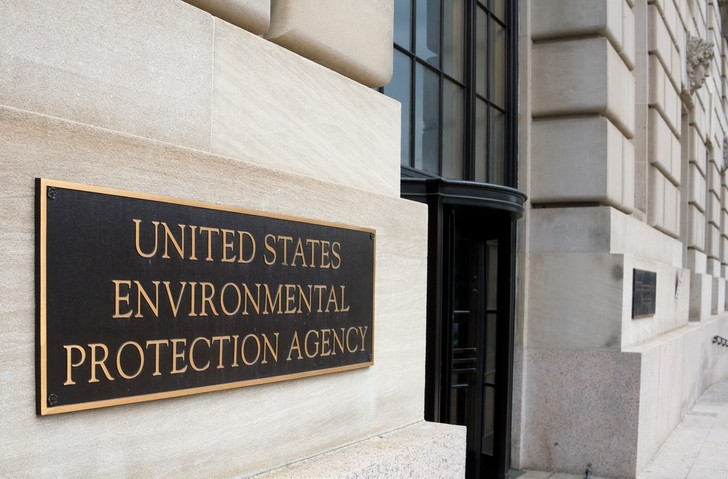AFIA calls for formaldehyde review to be supported by sound scientific evidence

The American Feed Industry Association (AFIA) says it is continuing to work with other industry trade associations to “push back” on the EPA’s efforts to eliminate the use of this chemical in animal agriculture.
Gary Huddleston, AFIA’s director of feed manufacturing and regulatory affairs, maintains that the US feed sector needs access to tools such as formaldehyde to continue providing safe feed.
In April 2022, the EPA released a draft toxicological assessment of formaldehyde under the Integrated Risk Information System (IRIS), which concluded that human exposure to formaldehyde at extremely low doses causes a variety of adverse health effects.
Critics say those conclusions are based on little new evidence and grounded on a few key studies that are of questionable quality.
Public consultation
The EPA also released the draft risk assessment for public comment. But Huddleston claimed the 60-day consultation period was too short.
“Right off the bat, the agency did not provide enough time for the industry to review a document of such size. There also wasn’t sufficient communication with the FDA or the US Department of Agriculture (USDA) during the required interagency review process,” he argued, in a comment piece on the AFIA website.
The draft IRIS assessment is now being evaluated by the US National Academies of Science, Engineering and Medicine (NASEM) through a specially appointed committee. The NASEM experts are conducting a full scientific review of the environment agency’s findings.
Formaldehyde has been banned as a feed additive in the EU since February 2018. The product was denied authorization in the EU, mainly based on concerns regarding the health of workers handling the substance, leading to its complete removal from the market as a hygiene condition enhancer.
The American Chemistry Council believes NASEM has not provided sufficient opportunities for public comment and participation.
"Recently, NASEM held two truncated one-hour oral public comment sessions, limiting scientific debate and discussion that could highlight key concerns with the draft assessment and resolve past NASEM recommendations.
"The opportunity for greater public participation is important because consistent fundamental concerns about the scientific conclusions and assessment process have been raised by a number of experts, authors of key studies, former government officials, a bipartisan group of Members of Congress and important stakeholders across a variety of fields."
Concrete evidence urged
During a public assessment meeting in January, Huddleston called on the NASEM commitee to evaluate the scientific literature adequately and transparently.
By doing so, he continued, those experts would assure appropriate methods are used to synthesize the current state-of-the science. He also stressed that any conclusions referenced regarding the hazard identification and dose-response analysis of formaldehyde should be properly supported by sound scientific evidence.
“I also asked the committee to urge the agency to go back and have meaningful discussions with the FDA and USDA regarding the many safe uses of formaldehyde in animal agriculture. Earlier this month, I raised the same concerns with the EPA Farm, Ranch and Rural Communities Federal Advisory Committee during a public meeting,” reported Huddleston.
Salmonella prevention
Feed additives containing formaldehyde are safely applied in feed mills by accurate, automated equipment that significantly minimizes employee exposure, said the AFIA representative.
While formaldehyde is not the only tool, it is a very effective one to have in the feed toolbox, he said. It can help keep salmonella out of the US food chain by reducing its presence in animal food.
“Salmonella is a major human food safety concern in the US. The Centers for Disease Control and Prevention estimate that in the US, there are about 1.35 million cases of salmonellosis, resulting in 26,500 hospitalizations and 420 deaths annually. Formaldehyde maintains a salmonella-negative status in complete feeds and feed ingredients for up to 21 days, which allows enough time for the treated feed to be fed to livestock on the farm before it has a chance to be recontaminated with salmonella."
Research coming out of Kansas State University also indicates that formaldehyde may be highly effective in killing the African swine fever (ASF) virus, he added.
The legal view
The impact of EPA’s conclusions could be far-ranging—formaldehyde is commonly used in a wide range of industrial and consumer products, commented legal experts, Hunton Andrews Kurth, last April.
If the risk assessment is finalized, EPA will officially designate formaldehyde as a known human carcinogen for the first time. Classification as a known human carcinogen could increase litigation risk for companies who manufacture formaldehyde or whose products may contain the chemical, they said.
“The classification could also invite new regulations or even bans under the Toxic Substances Control Act (TSCA), pursuant to which EPA is currently separately evaluating formaldehyde’s potential health and environmental risks.”









